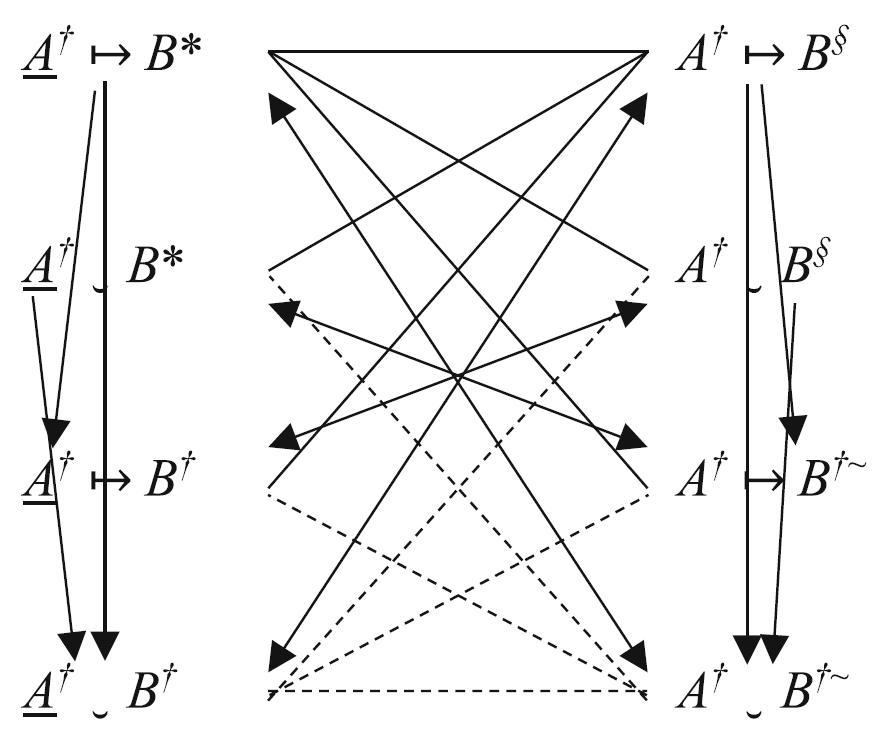
The Modal Logic of John Fabri of Valenciennes (c. 1500). A Study in Token-Based Semantics (2022), p. 80
by Geudens, Christophe; Demey, Lorenz

Copyright according to our policy
Caption
- Fabri’s account of modal opposition visualized
- Aristotelian family
- Buridan Sigma-4
- Boolean complexity
- 6
- Number of labels per vertex (at most)
- 1
- Uniqueness of the vertices up to logical equivalence
- Yes
- Errors in the diagram
- No
- Shape
- Rectangle (irregular)
- Colinearity range
- 0–2
- Coplanarity range
- 0
- Cospatiality range
- 0
- Representation of contradiction
- By central symmetry
Logic
Geometry
- Conceptual info
- No
- Mnemonic support (AEIO, purpurea ...)
- No
- Form
- none
- Label type
- symbolic
- Symbolic field
- logic
- Contains partial formulas or symbols
- No
- Logical system
- modal syllogistics
- Contains definitions of relations
- No
- Form
- solid lines ,
- none ,
- dashed lines
- Has arrowheads
- Yes
- Overlap
- No
- Curved
- No
- Hooked
- No
- As wide as vertices
- No
- Contains text
- No
- Label type
- none
Vertex description
Edge description
- Diagram is colored
- No
- Diagram is embellished
- No
- Tags
- Leuven
Style
Additional notes
- $\dag$ stands for 'possible'
$*$ stands for 'necessary'
§ stands for 'impossible'
$\sim$ stands for 'not'
$\mapsto$ stands for 'is included in'
$\smile$ stands for 'overlaps with'
underlining stands for existential import
(Cf. p. 7.)